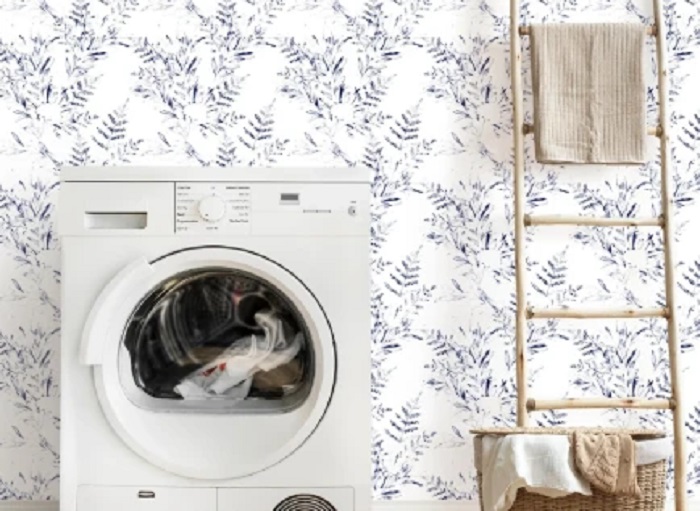Laundry tags are one of the most ignored parts of clothing, yet they’re the key to making clothes last longer. Most people just toss everything into the wash and hope for the best—until sweaters shrink, prints fade, or fabrics get ruined. Understanding laundry symbols can save you money, stress, and wasted outfits. Let’s decode what these icons really mean and how to use them properly.
Why Laundry Symbols Matter
Those little shapes and lines on your clothing tags aren’t random. They’re a universal guide created by textile care organizations. The idea is simple: anyone, anywhere, should be able to wash and dry their clothes correctly just by looking at the label. Ignoring them often leads to common laundry disasters.
If you’ve ever had trouble figuring out the right way to wash delicate clothes or maintain bright colors, decoding symbols is the first step. Especially for people doing laundry in London, where different water conditions and busy lifestyles make clothing care more challenging, following these tags can prevent unnecessary wear and tear.
The Five Main Categories of Laundry Symbols
Laundry tags are divided into five main groups. Once you learn them, you’ll never be confused again.
1. Washing Symbols
These look like a small bucket filled with water. Numbers inside represent the maximum water temperature in Celsius. A hand inside means hand wash only. A cross over the bucket means do not wash.
2. Bleaching Symbols
Represented by a triangle. A plain triangle means bleach is safe. A triangle with two diagonal lines means use only non-chlorine bleach. A triangle with a cross means no bleach at all.
3. Drying Symbols
A square represents drying. A circle inside a square is machine drying (the number of dots inside shows heat level: one dot for low, two for medium, three for high). A square with lines inside means line drying or drip drying.
4. Ironing Symbols
A simple iron shape. Dots again show temperature: one dot = low, two = medium, three = high. A cross over it means don’t iron. An iron with steam lines crossed out means no steam ironing.
5. Dry-Cleaning Symbols
A plain circle shows the garment should be dry cleaned. Letters inside (like “P” or “F”) tell the cleaner which chemicals to use. A crossed circle means “do not dry clean.”
Common Misunderstandings
Many people assume that if one garment can be machine washed, everything else can too. That’s how expensive silk, cashmere, and wool end up destroyed. For example:
- Wool sweaters shrink in hot water or tumble dryers.
- Silk blouses lose shape if machine washed on the wrong setting.
- Denim jeans fade fast if not washed according to the tag.
Practical Tips for Everyday Laundry
Now that the basics are clear, here’s how to apply them without overthinking:
Start by Sorting Clothes by Symbol
Instead of only sorting by color, add a quick check of laundry symbols. Delicates should never be tossed with heavy fabrics.
Use the Right Cycle
Modern washing machines have settings for delicates, wool, and synthetics. Matching your laundry symbols with these programs extends clothing life.
Pay Attention to Drying Instructions
The fastest way to ruin clothes is in the dryer. If your label says to line-dry, listen to it. Air-drying not only protects fabric but also saves energy.
Laundry in London: Extra Challenges
Because London’s water is hard, washing at high heat can set stains instead of removing them. Many labels suggest cooler temperatures, and for good reason. Following this advice keeps fabrics from stiffening and colors from fading. Professional cleaners in the city often adjust their process around hard water to get better results.
Hacks for Remembering Laundry Symbols
You don’t need to memorize them all overnight. Here are a few tricks:
- A bucket = wash.
- A triangle = bleach.
- A square = dry.
- An iron = iron.
- A circle = dry clean.
Another quick solution is to snap a photo of a laundry symbol chart and keep it handy on your phone.
When in Doubt, Ask the Pros
Not sure what your tag means? Professional cleaners deal with these symbols daily. Many share helpful laundry advice on social platforms like Hamlet Laundry’s Facebook page, making it easier for people to handle tricky garments at home.
Final Thoughts
Laundry symbols may look confusing, but they’re the simplest way to protect your clothes. Once you know that a bucket, triangle, square, iron, and circle represent the five main categories, everything clicks into place. The next time you see those small icons, you’ll know exactly how to wash, dry, or clean your item without guessing. For people doing laundry in busy cities like London, this knowledge saves money, time, and keeps your wardrobe looking new for longer.










